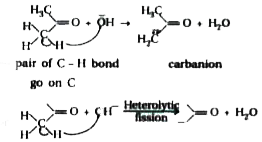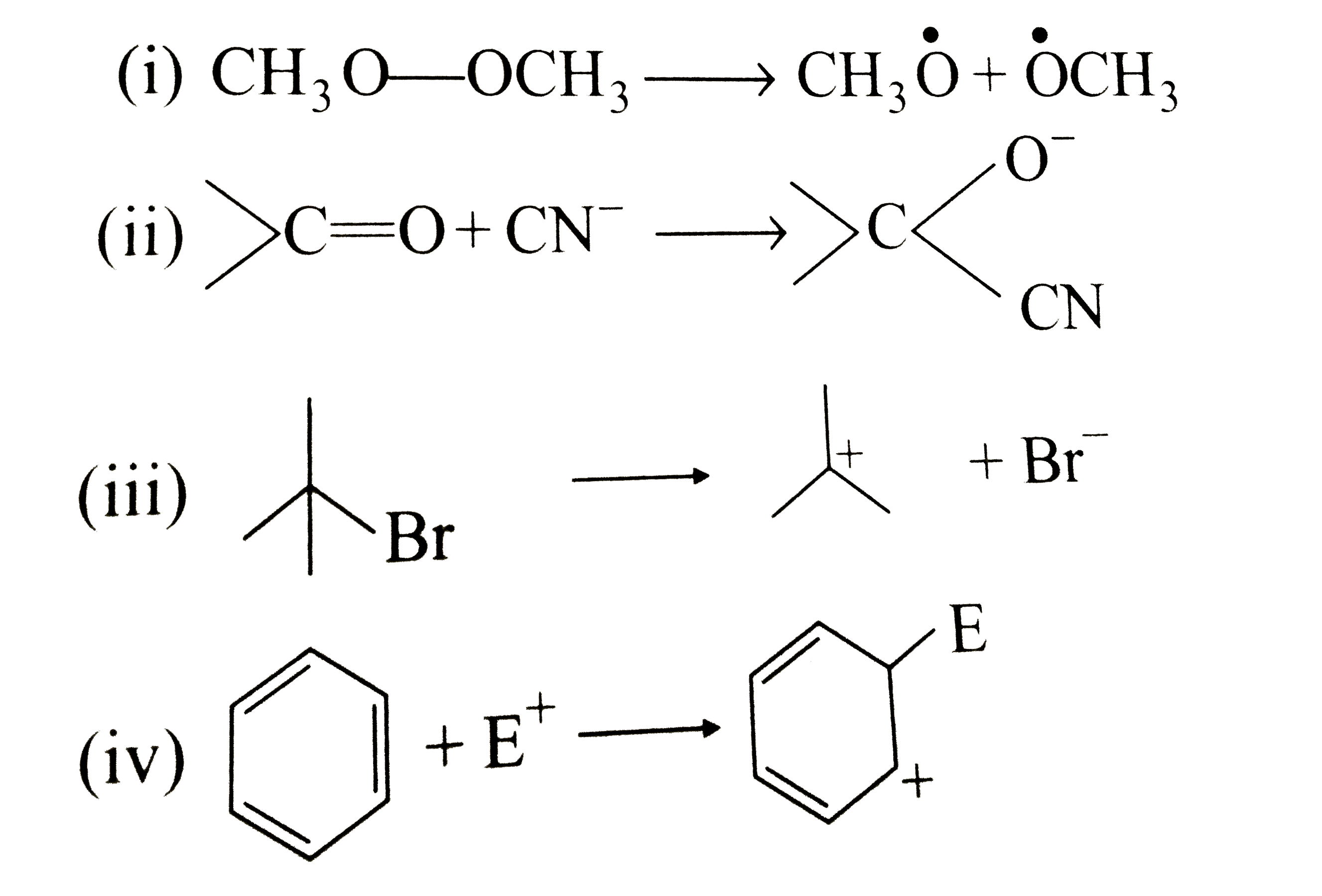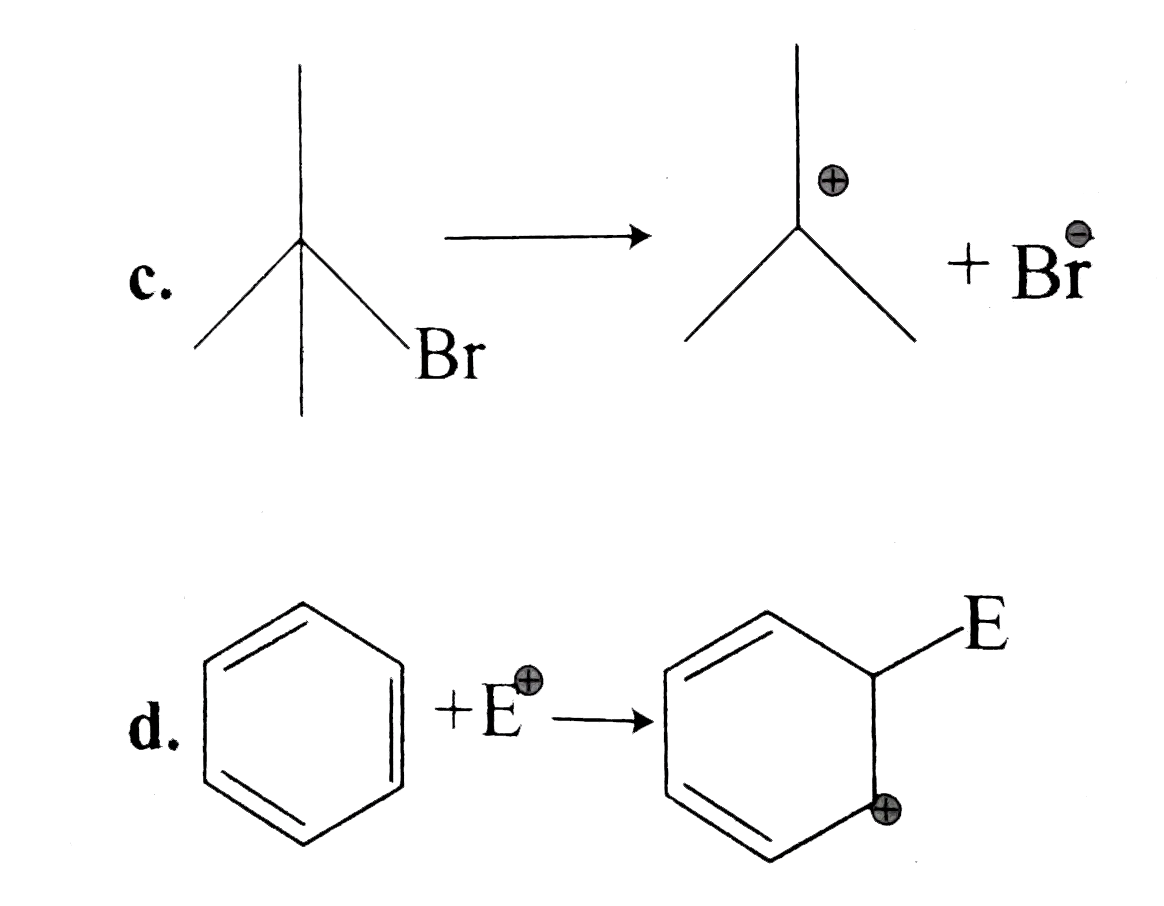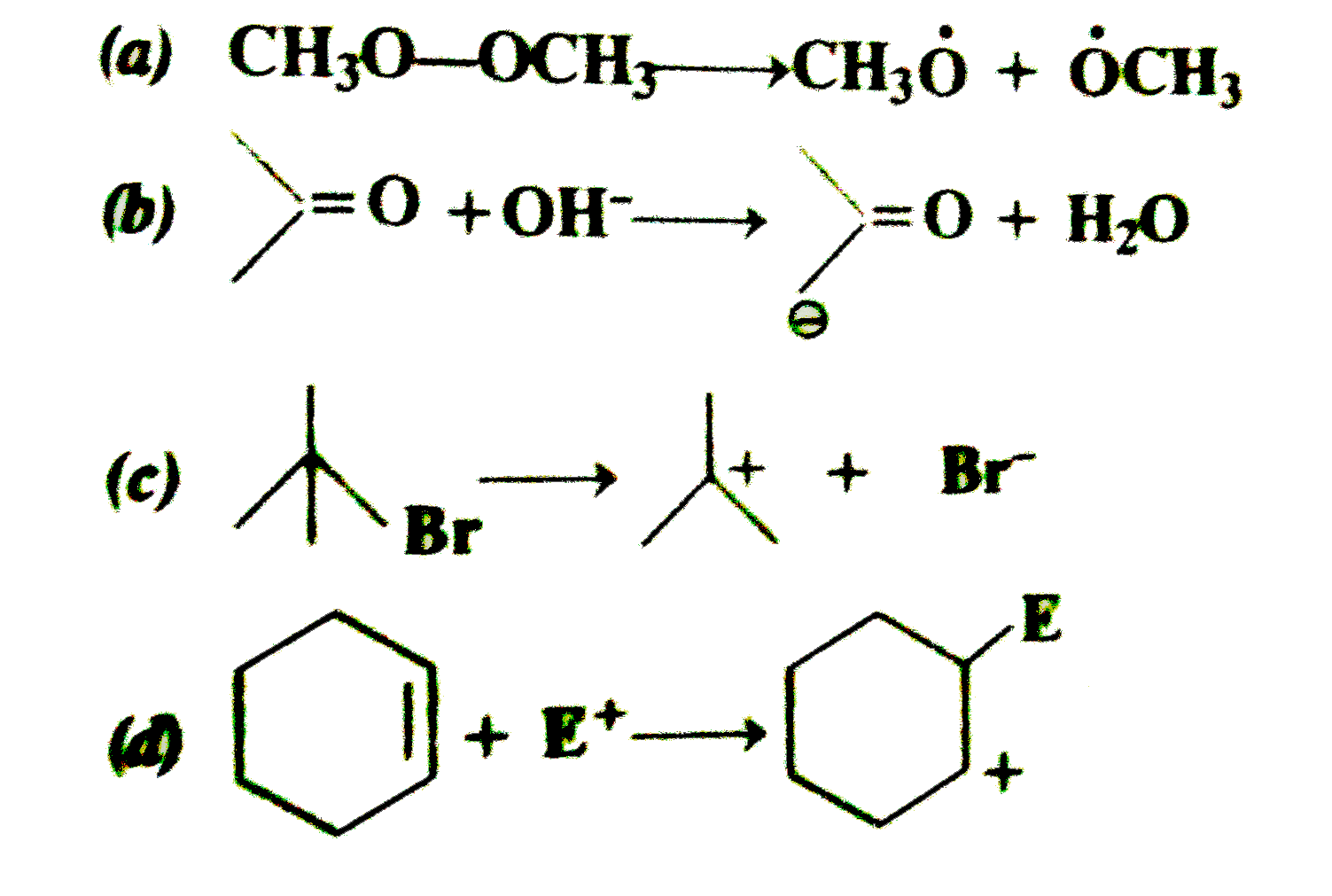For the following bond cleavages, use curved arrows to show the electron flow and classify each as homolysis or heterolysis. Identify reactive intermediate produced as free radical, carbocation and carbanion
(a) CH3O−OCH3→CH3.O+.OCH3

(a) Type of bond fission: Homolytic  The one-one e− Form free radicals of O-O bond transfer on O.
The one-one e− Form free radicals of O-O bond transfer on O.
 is CH3−O∣∣C−CH3. In it the carbanion −CH2COCH3 is from by heterolytic fission of C-H bond. The transfer of electron pair is as under
is CH3−O∣∣C−CH3. In it the carbanion −CH2COCH3 is from by heterolytic fission of C-H bond. The transfer of electron pair is as under

(c ) In it, the carbocation (CH3)C+ is formed by heterolytic fission of C-Br bond and or get the electron pair of C-Br bond

The electron pair of C-Br bond transfer on Br and form corbocation and Br−.
(d) The heterolytic fission of π bond in C=C and E+ get electron pair of π-bond and form carbocation (C6H6E)+

Topper's Solved these Questions
- ORGANIC CHEMISTRY SOME BASIC PRINCIPLES AND TECHNIQUESBOOK - KUMAR PRAKASHANCHAPTER - ORGANIC CHEMISTRY SOME BASIC PRINCIPLES AND TECHNIQUESEXERCISE - Section A -Try Your Self-3
20 Videos
- ORGANIC CHEMISTRY SOME BASIC PRINCIPLES AND TECHNIQUESBOOK - KUMAR PRAKASHANCHAPTER - ORGANIC CHEMISTRY SOME BASIC PRINCIPLES AND TECHNIQUESEXERCISE - Section-B (Short Questions)
282 Videos
- ORGANIC CHEMISTRY SOME BASIC PRINCIPLES AND TECHNIQUESBOOK - KUMAR PRAKASHANCHAPTER - ORGANIC CHEMISTRY SOME BASIC PRINCIPLES AND TECHNIQUESEXERCISE - Section -A(Quantitative Analysis)
18 Videos
- HYDROGENBOOK - KUMAR PRAKASHANCHAPTER - HYDROGENEXERCISE - Section-D NCERT Exemplar (Long Answer)
8 Videos
- QUESTION ASKED IN JEE -2018BOOK - KUMAR PRAKASHANCHAPTER - QUESTION ASKED IN JEE -2018EXERCISE - MCQ
10 Videos
Similar Questions
For the following bond cleavages, use curved arrows to show the electron flow and classify each as homolysis or heterolysis. Identify reactive intermediate produced during the fission.

View SolutionFor the following bond cleavages, use curved-arrow to show the electron flow and classify each as homolysis or heterolysis. Identify intermediate products as free radical, carbocation, and carbanion.
(a) CH3O−OCH3→CH3.O+.OCH3
 .
.
View Solution
Knowledge Check
Complete the following free radical addition equation
.RO+CH2=CH−CH3→AROCH2CH2.CH2BROH+CH2=CH−.CH2CROCH=CH−.CH2+H2DROCH2.CH−CH3Which of the following is the rearranged more stable carbocation of the given species?
CH3−CH3∣C∣CH3−⊕CH−CH3→ACH3−CH3∣C∣CH3−C⊕H−CH3BCH3−CH3∣C∣CH3−CH2−⊕CH2CCH3−CH3∣C⊕−CH3∣CH−CH3DCH3−CH3∣CH−CH∣CH3−⊕CH2
For the following bond cleavages, use curved-arrow to show the electron flow and classify each as homolysis or heterolysis. Identify intermediate products as free radical, carbocation, and carbanion.
(a) CH3O−OCH3→CH3.O+.OCH3
 .
.
View SolutionClassify each of the following as homolysis or heterolysis. Identify the reaction intermediates produced , as free radical, carbocation and carbanion.

View SolutionClassify each of the following as homolysis as homolysis or heterolysis. Identify the reaction intermediates produced , as free radical, carbocation and carbanion.

View SolutionGive the IUPAC name of:
CH3−O−OCH3∣C−CH3
View SolutionWhich of the following is expected to generate more stable carbocation on the heterolysis of C-I bond?
CH3−O−CH2−1,CH3−H∣N−CH2−1
View SolutionWhich of the following is expected to generate more stable carbocation on the heterolysis of C-I bond?
CH3−O−CH2−I,<br>CH3−H∣N−CH2−I
View Solution
